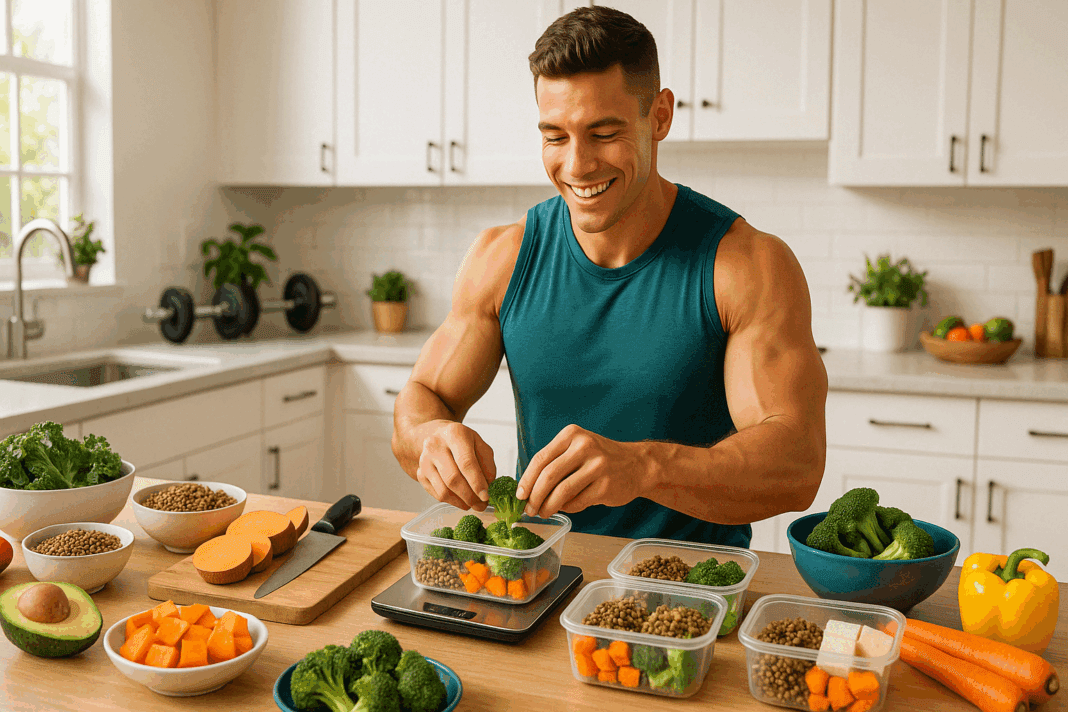Building muscle isn’t just about lifting heavier weights or logging more hours at the gym. At its core, muscle growth depends on strategic nutrition, consistent calorie intake, and the right balance of macronutrients. This is where bulking meal prep recipes, when designed with intention and science-backed strategies, become an indispensable tool for anyone looking to maximize their gains. Whether you’re a seasoned bodybuilder or just starting your muscle-building journey, understanding how to efficiently fuel your body through meal prep can profoundly impact your results.
You may also like: Smart Meal Prep for Weight Loss: Expert-Approved Lunch Ideas and Recipes to Stay on Track
High protein meal prep for muscle gain is more than a fitness trend—it’s a proven method to help you meet your nutritional needs with convenience and consistency. This article will guide you through expert-level insights on meal prep for muscle building, incorporating real science, practical strategies, and flavorful recipes to help you make the most of every bite.
The Science Behind Muscle Growth and Nutrition
Muscle growth, or hypertrophy, occurs when muscle fibers repair and rebuild following resistance training. This process demands a calorie surplus, high-quality protein, and a balanced intake of carbohydrates and fats. Without adequate fuel, the body simply cannot synthesize new muscle tissue. This is why meal prep ideas for muscle gain are critical for anyone trying to build size or strength.
Protein plays a leading role in muscle repair, acting as the primary building block of muscle tissue. The general recommendation for individuals looking to gain muscle is to consume between 1.6 to 2.2 grams of protein per kilogram of body weight daily. Meanwhile, carbohydrates restore glycogen stores depleted during workouts, and healthy fats support hormone production—particularly testosterone, which is closely linked to muscle development.
Crafting balanced meal prep meals for bulking allows you to stay ahead of your macronutrient targets while minimizing guesswork, saving time, and reducing the temptation to rely on ultra-processed convenience foods. It transforms your nutrition into a proactive tool for physical transformation.
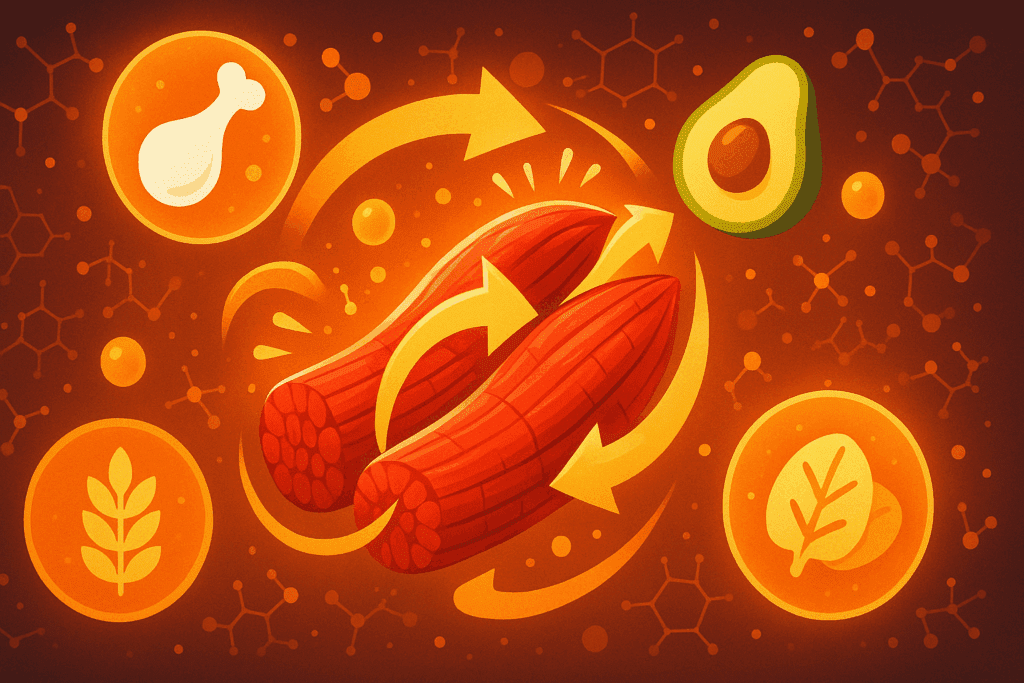
Why Meal Prep Matters for Muscle Building
Meal prep offers structure and consistency, two elements that are crucial when trying to follow a calorie surplus without resorting to random snacking or binge eating. With easy bulking meal prep, you maintain control over your portions and macronutrient distribution, making it easier to track progress and make adjustments as needed.
For those who struggle with appetite, gym meal prep provides an efficient way to include calorie-dense, nutrient-rich meals throughout the day without constantly thinking about what to eat next. Similarly, for individuals with fast metabolisms, planned meals help prevent unintentional weight loss.
Consistency in energy and protein intake also contributes to better workout recovery and improved performance. Rather than relying on ad hoc eating patterns that may fall short of your body’s needs, bodybuilding meal prep recipes provide the nutritional foundation to support muscle repair and performance adaptation.
Practical Strategies for Effective Bulking Meal Prep
The most effective bulking meal prep ideas begin with planning. Consider your weekly training load, daily calorie goals, and macronutrient targets. From there, design meals that align with your objectives. One effective strategy is batch cooking—preparing large portions of staples like brown rice, lentils, tofu, grilled tempeh, sweet potatoes, and high-protein pasta that can be mixed and matched with different vegetables and sauces throughout the week.
Emphasize calorie-dense foods such as nut butters, avocados, whole grains, and legumes. These not only provide essential nutrients but also make it easier to meet higher energy demands without eating massive volumes of food. Integrating smoothies into your routine can be a smart move too, especially when they contain high-quality plant-based proteins, oats, flaxseeds, and frozen fruits.
Meal prep for muscle gain recipes should also prioritize variety to prevent flavor fatigue. Incorporating herbs, spices, and international cuisines keeps your palate excited. Try rotating between Mediterranean, Asian, and Latin-inspired dishes while maintaining your core nutrition principles.
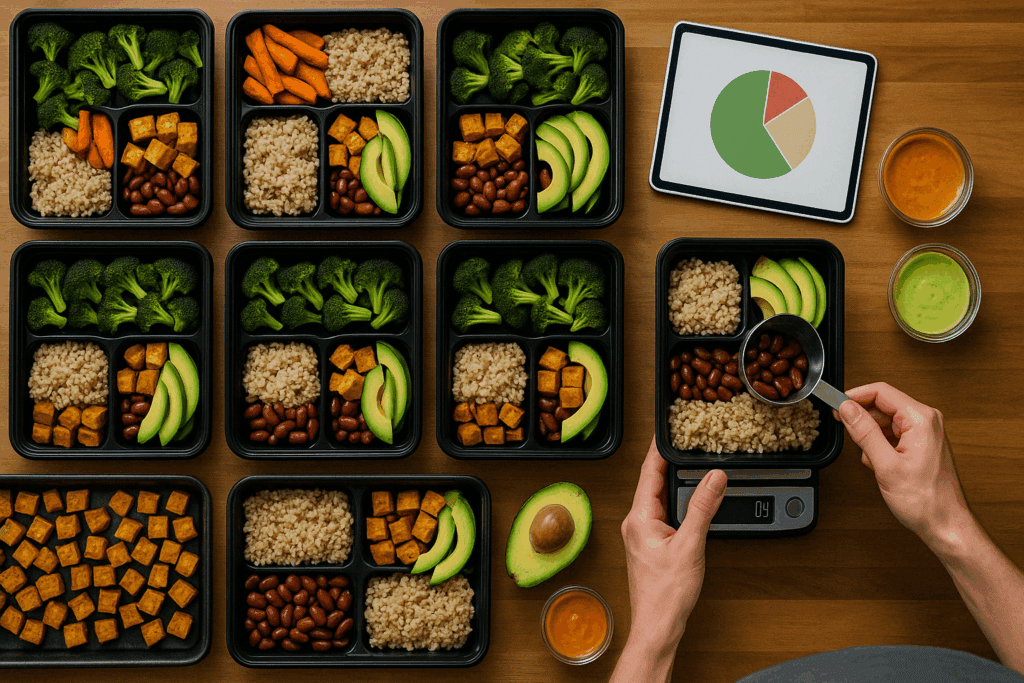
Best Foods to Include in Meal Prep for Muscle Gain
When designing your gym meal prep meals, focus on whole, nutrient-dense foods that deliver on both calories and performance-enhancing nutrients. Legumes such as lentils and chickpeas are rich in protein and fiber. Quinoa stands out as a complete protein and is also a great source of magnesium, an essential mineral for muscle function.
Tofu, tempeh, and seitan are cornerstone ingredients in plant-based meal prep ideas for building muscle. These protein-rich foods can be marinated and grilled in bulk, then added to grain bowls, wraps, or stir-fries. Sweet potatoes and oats offer long-lasting energy, while leafy greens, broccoli, and bell peppers supply antioxidants that reduce inflammation and aid recovery.
Adding healthy fats through nuts, seeds, and oils like extra virgin olive oil supports joint health and hormonal balance. Don’t overlook fermented foods such as kimchi or sauerkraut—they aid digestion, which is essential when consuming high volumes of food daily.
High Protein Meal Prep for Muscle Gain: What Works Best?
Protein is the central pillar of any meal prep for muscle gain strategy. To maximize muscle protein synthesis, aim to spread your protein intake evenly across the day, with 20 to 40 grams per meal being ideal depending on your body size and needs.
For vegans and vegetarians, combining legumes and grains helps ensure all essential amino acids are covered. Pairing black beans with rice or hummus with whole grain pita creates complete protein profiles. Pre-prepared protein-rich salads with edamame, quinoa, and tahini dressing also make satisfying, muscle-supporting lunches.
Don’t forget about plant-based protein powders. These can be added to oats, smoothies, or even baking recipes to easily boost your intake. The best meal prep meals for muscle gain often incorporate a variety of protein sources to improve amino acid availability and digestion efficiency.
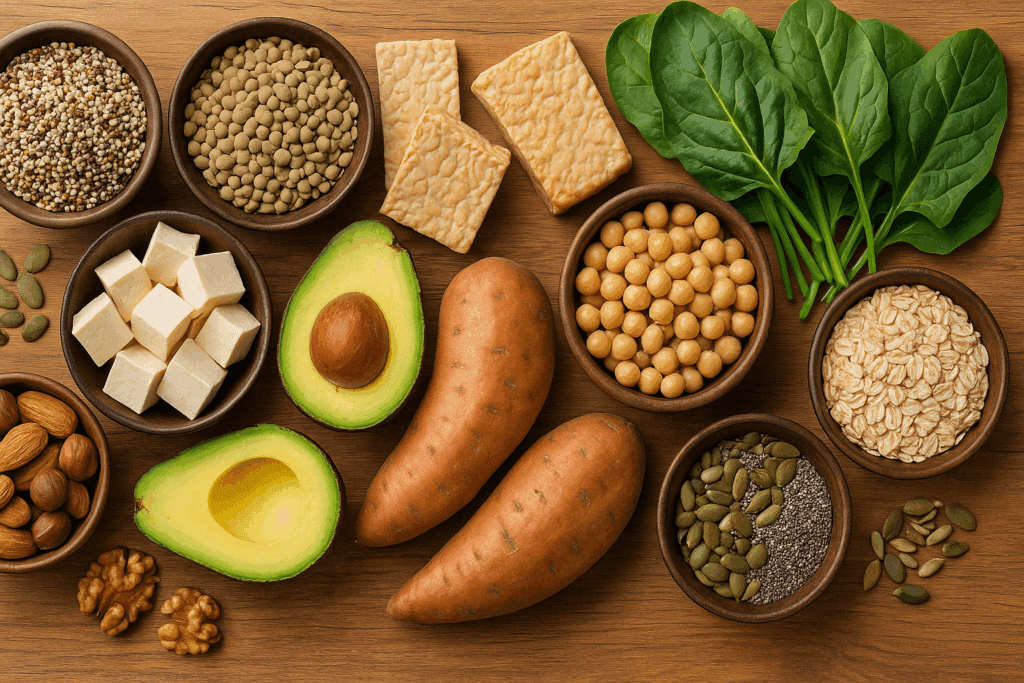
Is Keto a Good Diet for Muscle Building?
A topic that often arises in conversations about muscle gain and meal planning is the ketogenic diet. Many wonder, is keto a low carb diet? The answer is yes. The keto diet is characterized by very low carbohydrate intake—typically under 50 grams per day—paired with high fat and moderate protein.
So how does the keto diet vs low carb diet comparison shake out for athletes? While both restrict carbohydrates, the ketogenic diet forces the body into ketosis, a state where fat is the primary fuel source. A standard low carb diet allows for slightly more flexibility in carb intake, which can better support high-intensity training due to greater glycogen availability.
In the context of muscle gain, the ketogenic diet vs low carb debate often centers on sustainability and performance. The low carb diet keto diet comparison reveals that while both can result in fat loss, the restrictive nature of keto may limit performance gains if carbohydrates are too scarce. The body requires glycogen for explosive movements and progressive overload in the gym. So when evaluating whether a low carb diet keto diet plan is ideal, the individual’s training intensity, goals, and personal response to carb intake must be considered.
Is a Keto Diet Sustainable for Long-Term Muscle Building?
Sustainability is another major consideration. Is a keto diet sustainable in the long term, especially for those aiming to gain muscle? While some individuals thrive on ketogenic eating, many find it difficult to maintain due to limited food choices and social constraints. Muscle growth also requires insulin—a hormone stimulated by carbohydrate intake—so extremely low-carb diets may not provide the optimal environment for building lean mass.
Moreover, is keto no carbs? Not entirely. Even a strict keto diet includes trace amounts of carbohydrates from vegetables, nuts, and seeds. Still, these minimal levels often fall short of the needs of active individuals engaged in regular resistance training.
Ultimately, if your goal is to maximize gains, incorporating strategic carbohydrates around workouts may be more effective. That said, elements of keto and low-carb eating can be adapted into bulking meal prep recipes, especially during cutting phases or for individuals with insulin resistance.
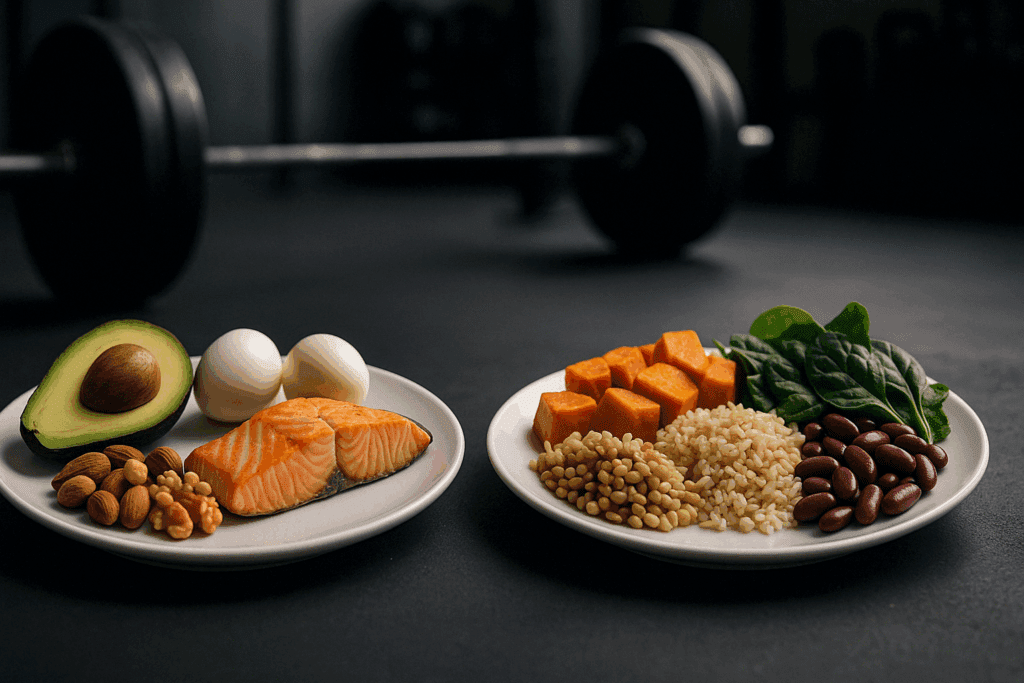
Smart Bulking Meal Prep Recipes for Real Gains
Let’s turn the science into practice with examples of easy bulking meal prep recipes that balance flavor, nutrition, and muscle-building potential.
One excellent dish is a lentil and quinoa chili. This meal combines two protein-rich plant foods, adds fiber for digestion, and can be prepared in large quantities. Another top contender is roasted sweet potatoes with black beans, avocado, and tahini drizzle—perfect for gym meal prep meals with balanced macros.
For those who enjoy global flavors, try tofu tikka masala with brown rice or seitan fajita bowls with sautéed peppers and guacamole. These meals pack in nutrients and keep things exciting.
Smoothies can also be prepped in freezer packs. Combine frozen banana, spinach, plant-based protein powder, chia seeds, and oats in individual bags—just add plant milk and blend. These smoothies provide a portable, high-calorie, high-protein option ideal for post-workout recovery.
The Role of Timing and Frequency in Meal Prep for Muscle Gain
How often and when you eat plays a key role in supporting hypertrophy. Distributing calories across 4 to 6 meals per day helps maintain energy and supports protein synthesis throughout the day. Strategic timing, such as consuming a protein- and carb-rich meal post-workout, enhances recovery and encourages muscle repair.
Meal prep ideas for building muscle should account for these patterns. Prepare post-workout meals ahead of time with a mix of protein, carbs, and healthy fats. For example, a chickpea and couscous bowl with olive oil dressing offers fast-digesting carbs and plant protein.
Snack-sized meals also support your goals. Think trail mix with almonds and dried fruit, or homemade granola bars with oats, dates, and vegan protein powder. These options bridge the gap between major meals and help you hit your calorie targets without compromising nutritional quality.
Avoiding Common Pitfalls in Bulking Meal Prep
Despite the best intentions, some individuals fall into traps that hinder progress. One common mistake is over-relying on processed foods to meet calorie goals. While convenient, these foods often lack micronutrients, fiber, and phytochemicals vital for recovery and long-term health.
Another issue is monotony. Repeating the same meals can lead to taste fatigue and reduced appetite. The best bodybuilding meal prep ideas incorporate diversity—not just for flavor, but to ensure a wide range of nutrients.
Portion distortion is another risk. Without proper tracking, it’s easy to over- or under-eat, even when prepping meals. Using a food scale and nutrition apps helps ensure accuracy and allows for targeted adjustments based on progress.
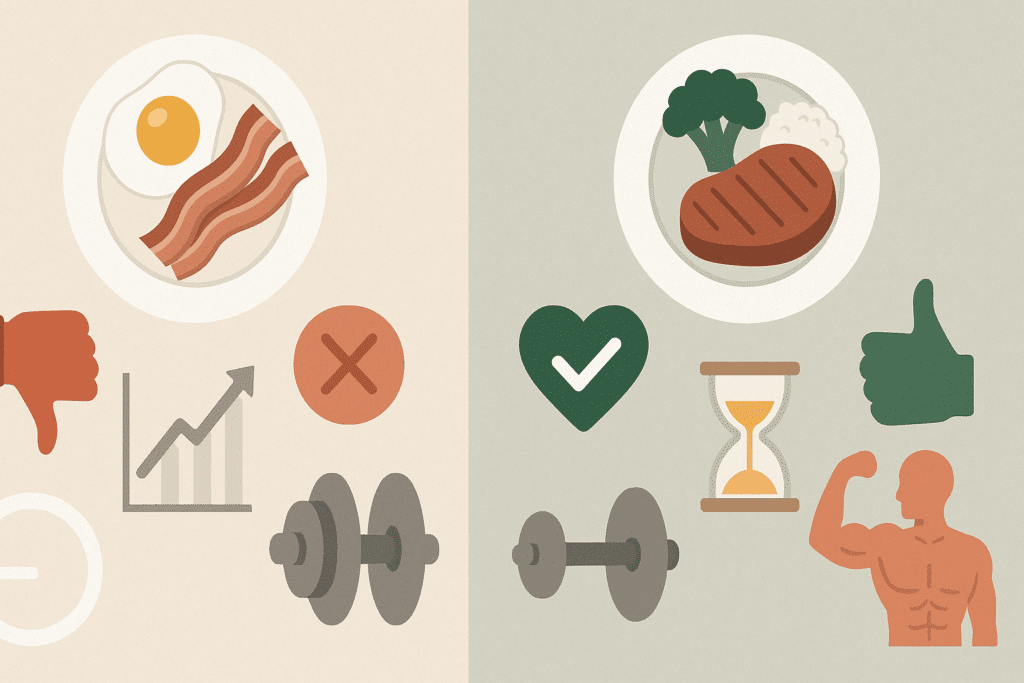
Frequently Asked Questions: Bulking Meal Prep for Muscle Growth
1. How can I make bulking meal prep more enjoyable if I tend to lose my appetite with repetitive meals?
Monotony is a common barrier when following structured meal prep for muscle gain. One way to combat this is by rotating spices, sauces, and preparation styles. For example, using the same ingredients in different formats—like turning your bulking meal prep recipes into wraps one day and power bowls the next—can enhance the eating experience without altering nutrition goals. Incorporating international flavor profiles, such as Thai peanut sauce or Moroccan-inspired seasoning, can breathe life into familiar ingredients. These changes also increase dietary diversity, which supports a healthy gut microbiome—something many athletes overlook in standard gym meal prep plans.
2. Are there any psychological benefits to sticking with bodybuilding meal prep recipes long term?
Yes, there are several. Regularly engaging in meal prep for muscle building fosters a sense of discipline and control over your health. This consistent structure can lower stress and decision fatigue, which are often underestimated contributors to poor dietary habits. Furthermore, successfully executing easy bulking meal prep each week can reinforce a growth mindset, enhancing your commitment to other aspects of training. Over time, this structure helps establish a positive feedback loop: sticking to your plan yields better physical results, which further motivates adherence.
3. What role do plant-based proteins play in the best meal prep meals for muscle gain?
Plant-based proteins like lentils, tofu, and seitan are becoming staples in many meal prep ideas for building muscle due to their versatility and health benefits. While they may have lower concentrations of some essential amino acids compared to animal proteins, combining them strategically can result in a complete profile. For example, pairing brown rice with black beans offers all nine essential amino acids, making it one of the smarter bodybuilding meal prep ideas. Additionally, plant-based proteins often come with anti-inflammatory compounds and fiber, which support both performance and recovery in the long term.
4. How can bulking meal prep ideas help reduce food waste?
When planned correctly, bulking meal prep encourages full use of perishable ingredients and reduces reliance on single-use, convenience foods. For instance, if spinach is used in a chickpea curry early in the week, any leftovers can be blended into a smoothie or folded into scrambled tofu. Gym meal prep meals that incorporate batch-cooked grains, roasted vegetables, and sauces also allow for cross-utilization throughout the week. This not only minimizes waste but also increases sustainability—a growing concern among environmentally conscious athletes. High protein meal prep for muscle gain can be both resource-efficient and nutritionally dense when designed with these considerations in mind.
5. What are some common mistakes people make when following meal prep meals for bulking?
A frequent error is underestimating actual calorie needs. Many individuals think they’re in a surplus when they’re not, leading to frustration with slow progress. Inaccurate portioning is another issue, especially when eyeballing ingredients rather than weighing them. Some also rely too heavily on protein shakes without solid meals, which can lack other essential nutrients. Failing to include a variety of foods in your meal prep for muscle gain recipes may also result in nutrient gaps, impacting both muscle growth and overall health.
6. Can meal prep ideas for muscle gain be tailored for different training phases, like cutting or maintenance?
Absolutely. While bulking meal prep focuses on a caloric surplus, the core principles can easily adapt to other phases. For cutting, ingredients like leafy greens, cruciferous vegetables, and lower-calorie protein sources such as tempeh or legumes are emphasized. For maintenance, portions may be adjusted while keeping macronutrient balance intact. Bodybuilding meal prep recipes serve as a flexible foundation; they can be tweaked for different goals without overhauling your entire eating strategy.
7. What are effective ways to add variety to gym meal prep meals without increasing prep time?
Efficiency doesn’t have to mean uniformity. A smart strategy is to batch-cook neutral base ingredients such as quinoa, lentils, and grilled tofu, and then use different sauces, herbs, or sides throughout the week. For example, a basic lentil dish can become Mexican-inspired with salsa and avocado one day and take on an Indian flavor profile with curry and coriander the next. Meal prep ideas for building muscle that incorporate theme days or cultural cuisines can keep the experience fresh while maintaining consistency. Even rotating cooking methods—like grilling, roasting, or sautéing—can prevent palate fatigue while preserving nutrition.
8. How can beginners ease into bodybuilding meal prep ideas without feeling overwhelmed?
Starting with two to three simple recipes is usually more effective than diving into a full week’s worth of complex meals. Choose easy bulking meal prep dishes that use overlapping ingredients to minimize shopping and prep time. Focus on high-impact meals like breakfast smoothies and post-workout bowls that directly support recovery. Over time, gradually expand your meal prep for muscle building routine by adding variety and volume. Educational tools like macro trackers or meal planning apps can also help simplify the process and build confidence.
9. How important is hydration in conjunction with bulking meal prep?
Hydration is often overlooked in meal prep discussions, yet it’s a key factor in muscle performance and digestion. Proper fluid intake aids nutrient absorption, reduces fatigue during training, and supports muscle recovery. When consuming calorie-dense foods from meal prep for muscle gain recipes, fiber intake tends to increase, which makes adequate hydration even more critical to prevent digestive discomfort. Including water-rich foods like cucumbers, oranges, and zucchini in gym meal prep meals can further support hydration efforts. In high-protein diets, water helps flush nitrogen waste products from protein metabolism, which underscores its importance.
10. What are some signs that your current bulking meal prep isn’t working optimally?
If you’re consistently feeling bloated, sluggish, or not recovering well between workouts, it may be time to reassess your strategy. Another red flag is a plateau in strength or body composition despite adhering to your gym meal prep meals. These signs might suggest macronutrient imbalances, insufficient calories, or a lack of micronutrients. Repeating the same bulking meal prep recipes without periodic evaluation can lead to stagnation. Reassessing your meal prep ideas for muscle gain every few weeks helps ensure they evolve with your training intensity, metabolism, and recovery needs.
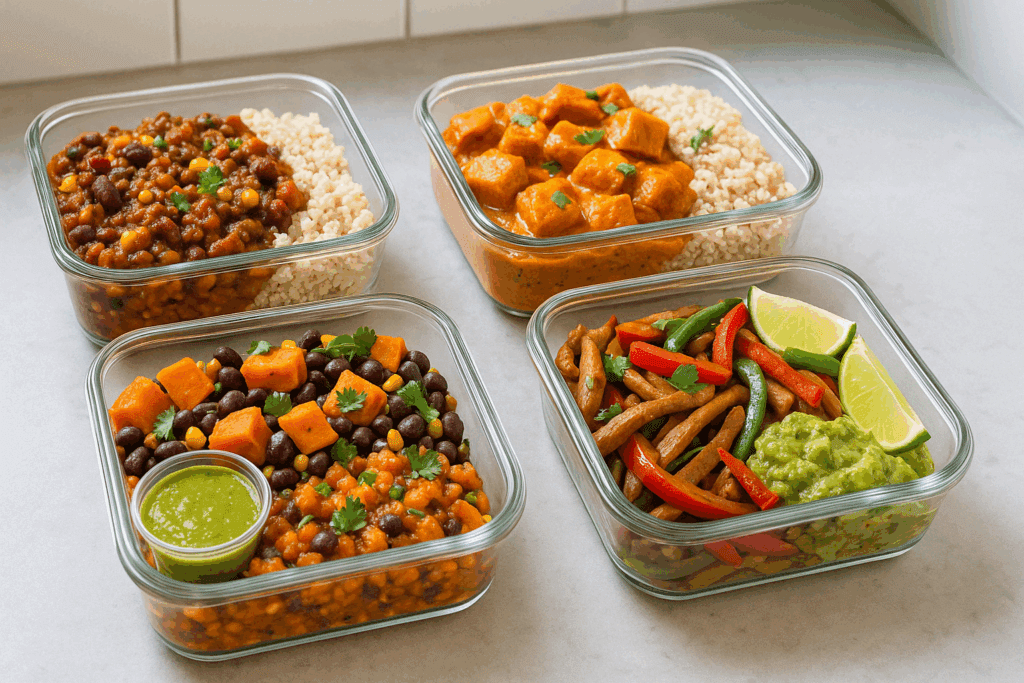
Reflecting on the Best Meal Prep Meals for Muscle Gain
In summary, successful meal prep for muscle building is about more than packing containers. It’s a deliberate strategy that aligns your nutrition with your training goals. By prioritizing whole, high-protein foods, balancing macronutrients, and timing meals effectively, you create an environment where muscle can thrive.
Whether you lean into easy bulking meal prep for convenience, experiment with diverse bulking meal prep ideas, or evaluate the pros and cons of a ketogenic diet vs low carb eating for your goals, the most important factor is consistency. Sustainable results require consistent action, and meal prep empowers you to deliver the fuel your body needs—every day.
So the next time you hit the gym, remember: your growth doesn’t stop when the workout ends. It continues at the dinner table, in your kitchen, and in the choices you make with each prepared meal.
Fuel your gains the smart way, and let your food work as hard as you do.
Was this article helpful? Don’t let it stop with you. Share it right now with someone who needs to see it—whether it’s a friend, a colleague, or your whole network. And if staying ahead on this topic matters to you, subscribe to this publication for the most up-to-date information. You’ll get the latest insights delivered straight to you—no searching, no missing out.
Further Reading:
26 Foods to Eat to Gain Muscle
How to Meal Prep for Muscle Gain
Disclaimer
The information contained in this article is provided for general informational purposes only and is not intended to serve as medical, legal, or professional advice. While NewsHealthWatch strives to present accurate, up-to-date, and reliable content, no warranty or guarantee, expressed or implied, is made regarding the completeness, accuracy, or adequacy of the information provided. Readers are strongly advised to seek the guidance of a qualified healthcare provider or other relevant professionals before acting on any information contained in this article. NewsHealthWatch, its authors, editors, and contributors expressly disclaim any liability for any damages, losses, or consequences arising directly or indirectly from the use, interpretation, or reliance on any information presented herein. The views and opinions expressed in this article are those of the author(s) and do not necessarily reflect the official policies or positions of NewsHealthWatch.

